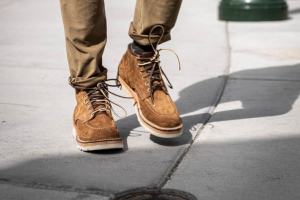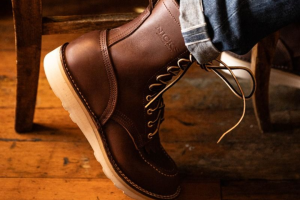What You Need To Know About Footbeds In Boots
One of the most significant parts of a pair of boots is one of the things you just don't see...namely, the footbed. Arguably, it's the most important aspect of construction, but it's the part that gets overlooked too easily.
Often enough, it's the footbed that sets the stage for the longevity and comfort of a pair of work boots and indeed, even casual boots. The support you feel under your feet has far more to do with what's under your foot than the leather that goes over it.
And it is also the footbed where most boot brands fall terribly short. If there is an area where a bootmaker should not compromise, the footbed is it...and that's where most of them do. So let's talk about why it's important and what goes into a good one.
What Is The Footbed?
The footbed is the layers of material between the insole under your foot and the midsole or slipsole that the outsole is attached to. This material is what provides the comfort and support that quality footwear is known for.
And it is also usually what has failed when a pair of boots that used to be supportive and comfortable stop feeling that way.
Think of the midsole as the stuffing inside a mattress. Once it starts to collapse, the mattress is no longer comfortable to sleep on. It's been pounded down until it's permanently deformed, no longer able to cushion and support as it needs to.
The footbed needs to have enough give to support the foot, but can't be so hard that it doesn't take the shape of your foot. There are a number of construction techniques and materials that can do it, but few that are capable of providing comfort and support for the long term.
How Most Bootmakers Make The Footbed
Bear in mind that this isn't to say other bootmakers make a bad product. This is to say they make a product differently, because they have different priorities. Usually, it's cutting costs so they can sell their products at a lower price point.
The typical work boot has a footbed of fiberboard, compressed wood fibers very similar to particle board and other lower-cost building materials, over a layer of hot cork, which is literally bits of cork in hot glue. So it's a hard material over a softer material that's held together with adhesive.
Some bootmakers also insert a shank in the middle of the footbed, which runs from about the middle of the heel to the middle of the foot. This gives the boot a modicum of rigidity in the arch, but rarely significant arch support.
Now, this matters as the fiberboard will compress up to a point, but most of the compression is on the cork filling. What eventually happens is the cork filling is pressed until the glue begins to break apart and the cork filling begins to break up and spread away from the impression your foot makes in the footbed.
These materials and this construction method has been typical for work wear for decades, because it does work (up to a point) and it isn't terrifically costly. If a manufacturer views their products as being somewhat disposable (and therefore requiring more frequent replacement) longevity is not really a design priority.
This is why a pair of mid-tier price (and construction) seems to "wear out" fairly fast with hard daily wear...and why the upper-tier of work boots take a lot longer to require a rebuild of the footbed.
How The Best Work Boots Are Made
The higher tier of leather boots in terms of quality use different materials and methods.
The upper tier of work boots and leather heritage boots construct the footbed using vegetable-tanned leather (oak-tanned is common) to make the footbed. Leather compresses, like fiberboard, but is more supple, allowing for more compression throughout the layers of the footbed.
While oak-tanned leather will compress to a degree, it won't break apart like cork filling, so you never lose the support or comfort.
However, that does come with some costs. First, the additional cost. Leather is more expensive than cork or fiberboard, which are cheap materials.
Second, break-in is longer! Because vegetable-tanned leather is harder than oil-stuffed or chrome-tanned leather, it will take a few weeks before the footbed starts to really take the shape of your feet. Once it does, the shape of your feet has been literally stamped into the leather, and heavy-duty leather boots can feel almost like your favorite pair of slippers.
Third, is an issue that most footbeds run into. Exposure to extremely wet conditions can cause cork, leather and fiberboard all to break down overtime. This is why there are a number of water resistant boots that utilize rubbers and polyurethane instead, to ensure the material under your feet does not break down if you happen to work in those wetter conditions constantly.
The payoff is more comfort and more support for much longer. With heavy daily use, an oak leather footbed can last twice as long - if not longer - than a fiberboard-over-cork footbed. With casual use…a full rebuild may not be needed for a decade. Or ever.
Think of the footbed as like the foundation of a building. Do you want to trust in a "good enough" foundation based on compromise?
Or would you rather trust in a solid foundation that's built to last?




